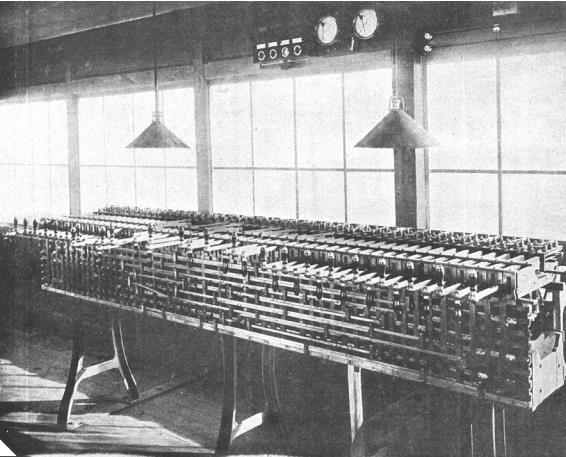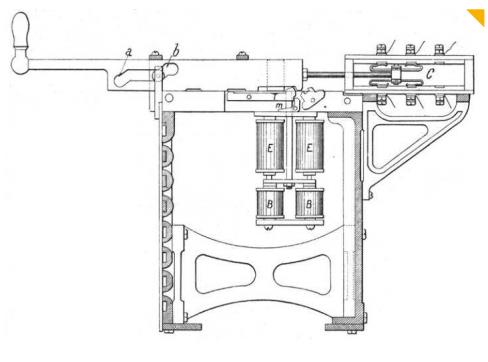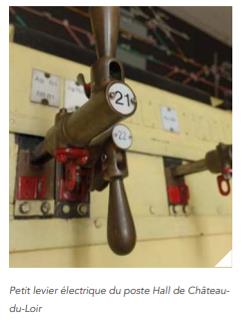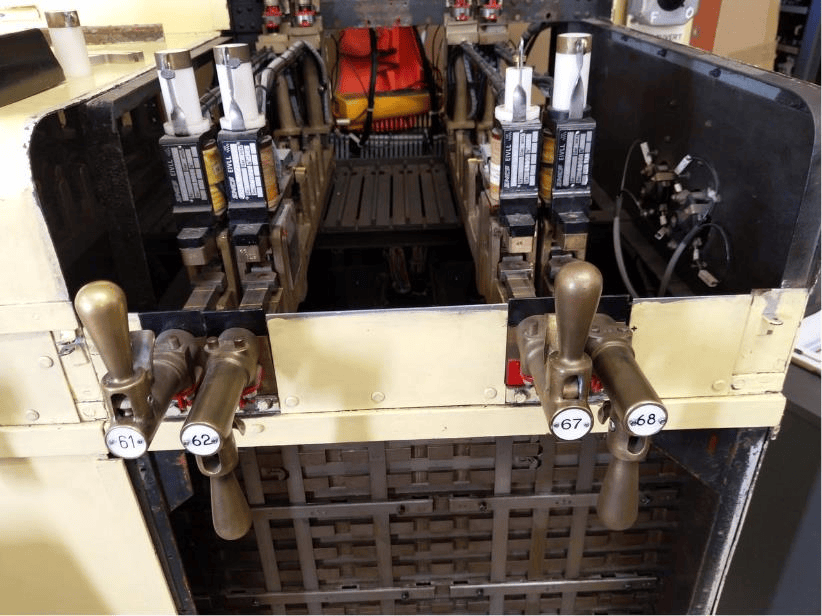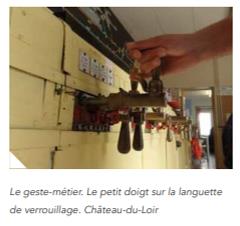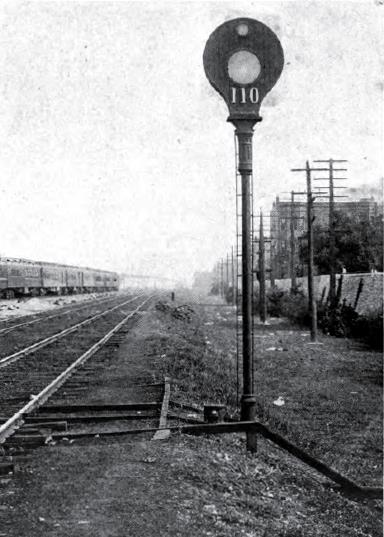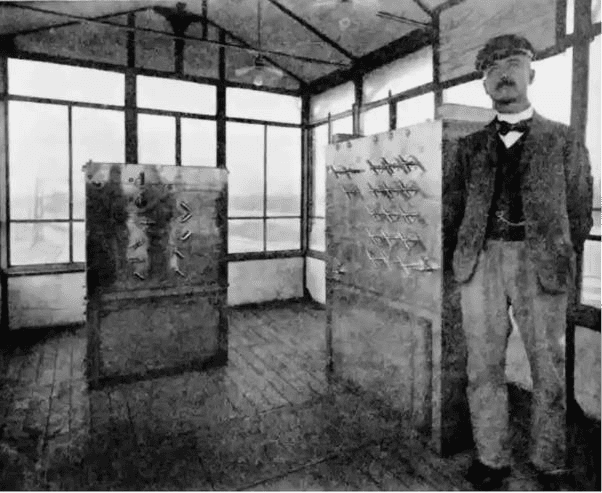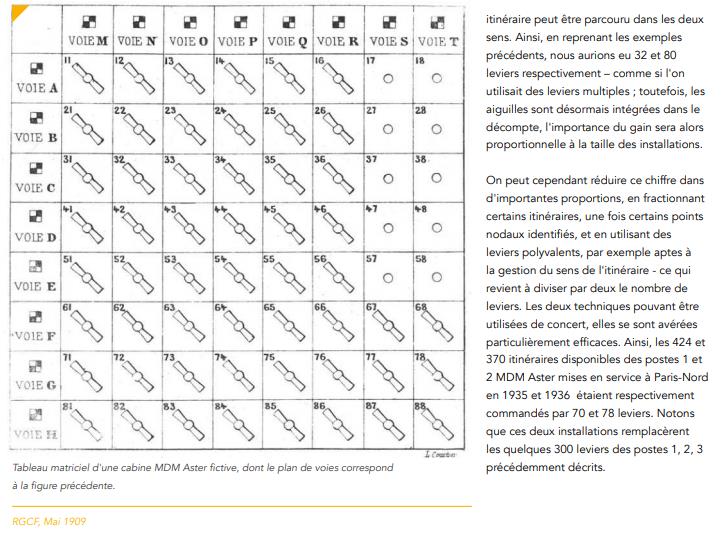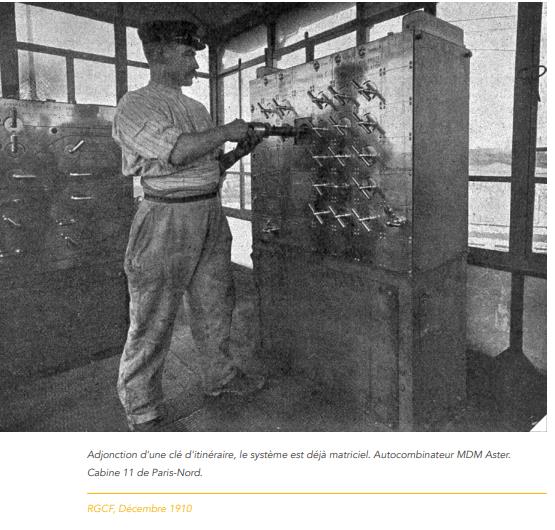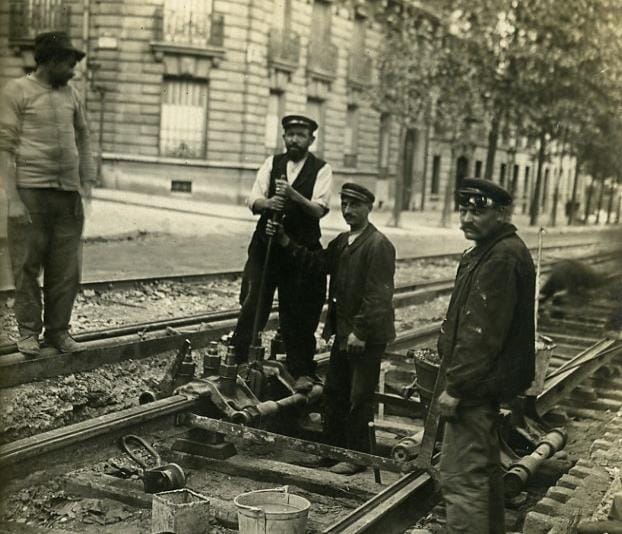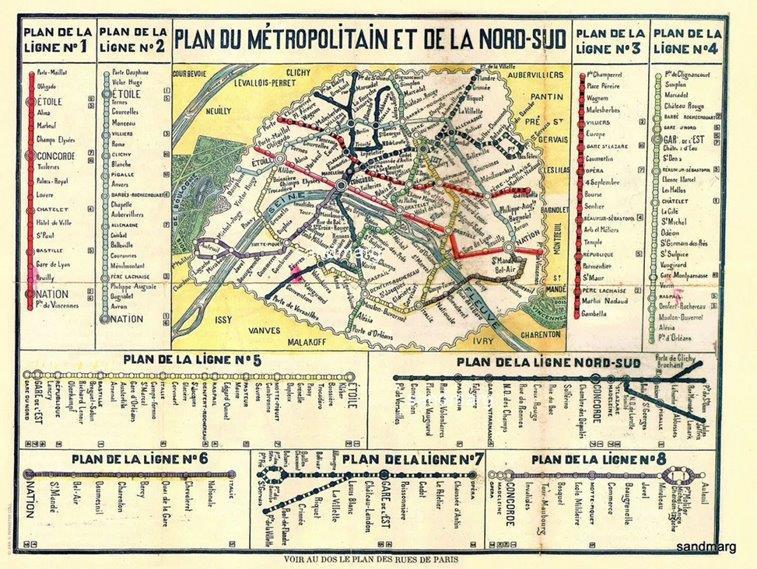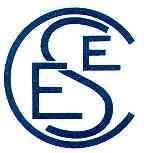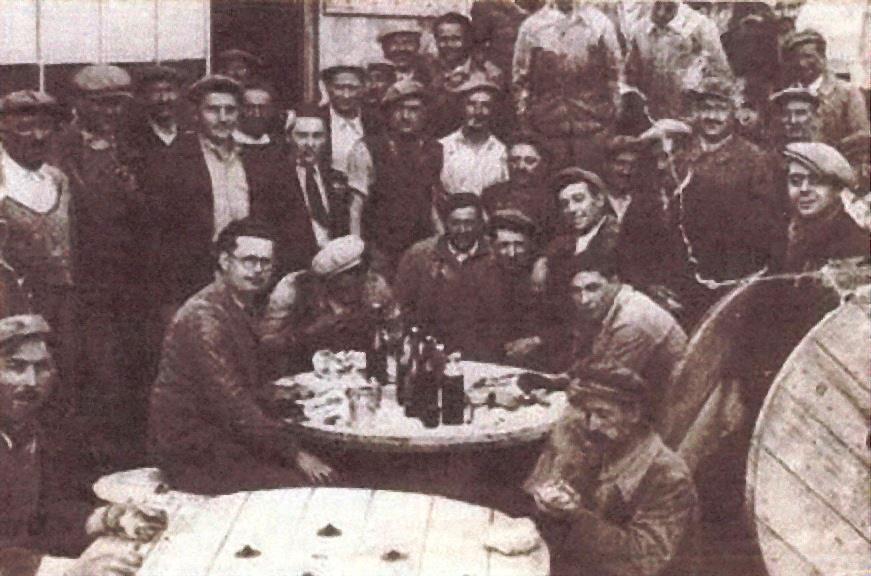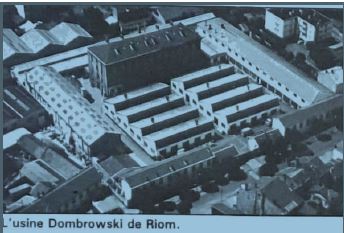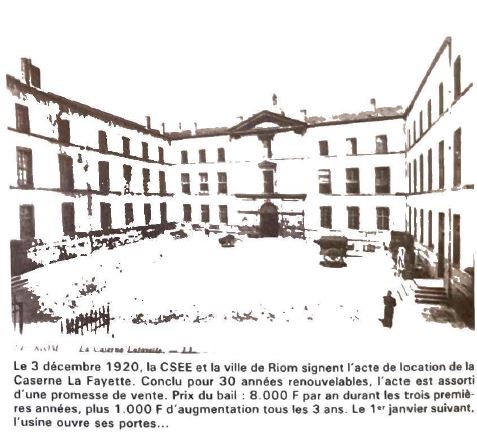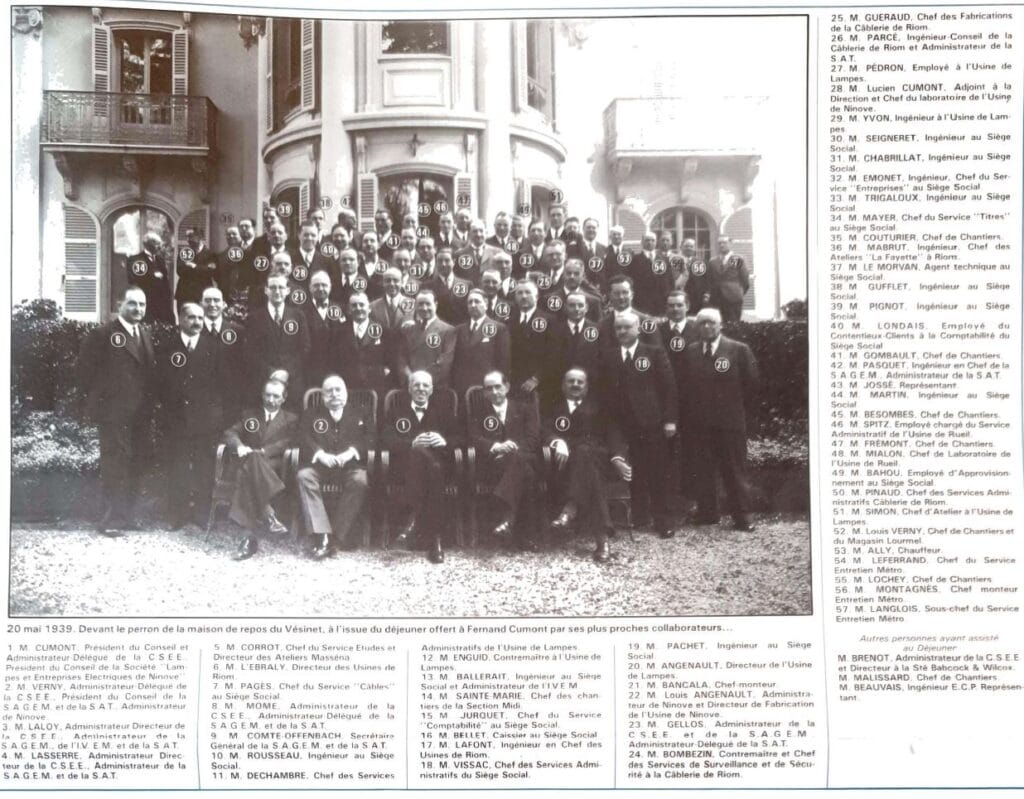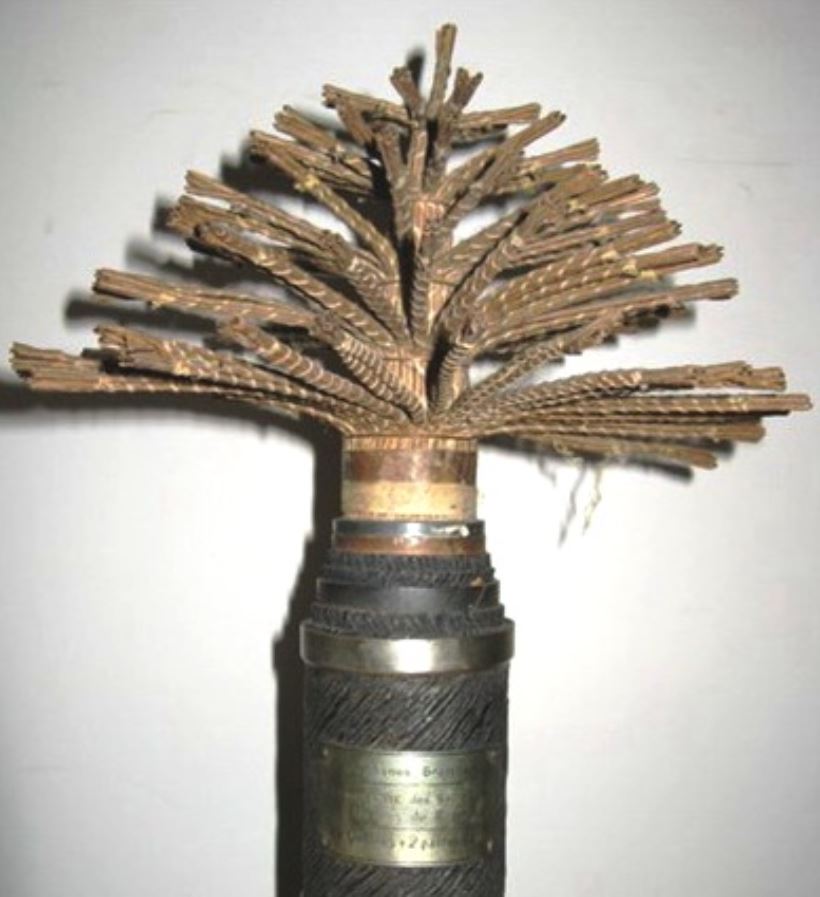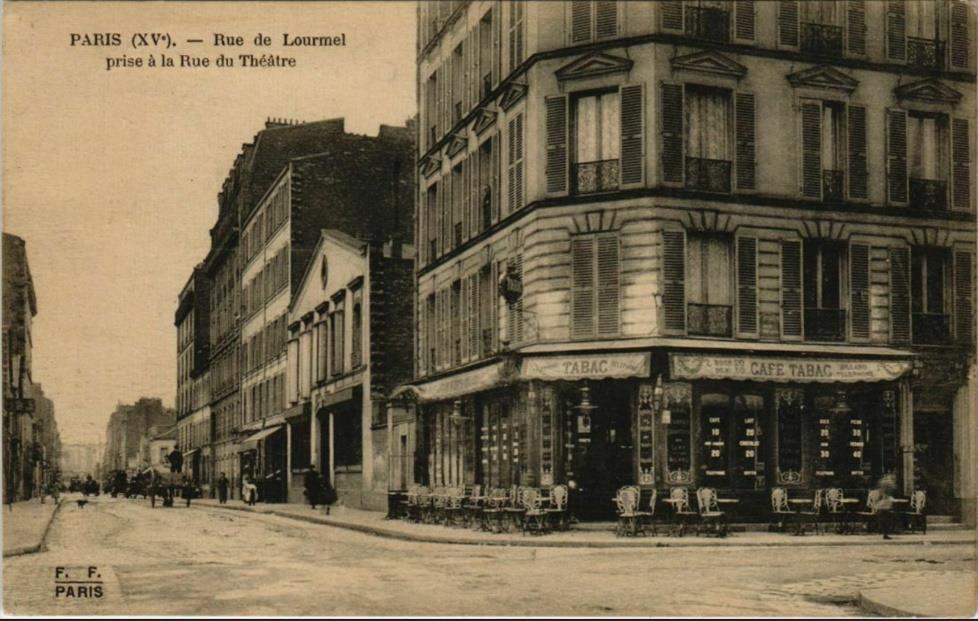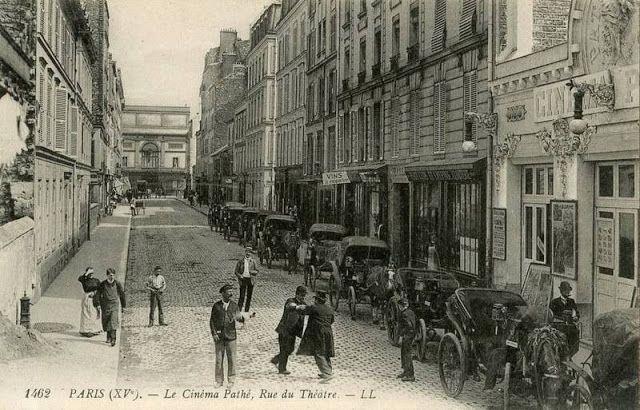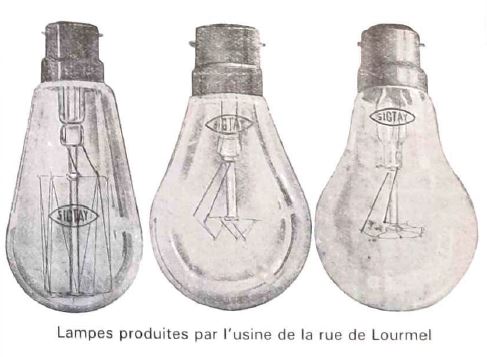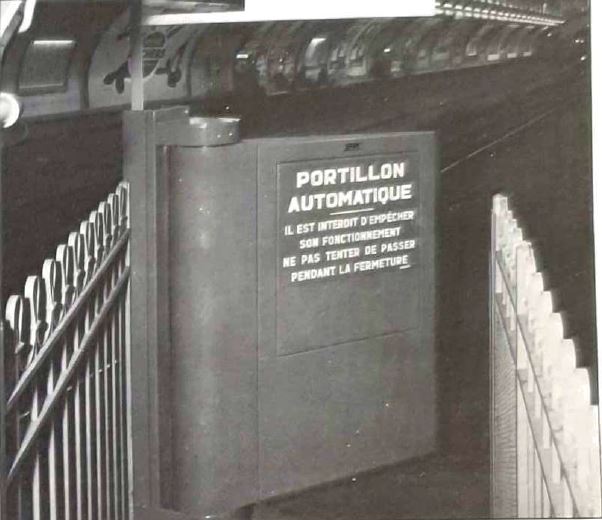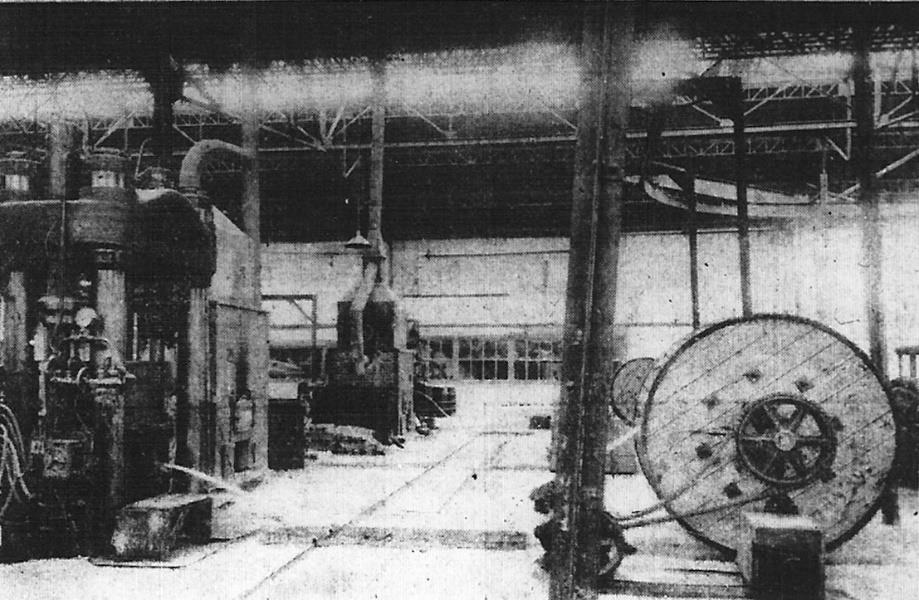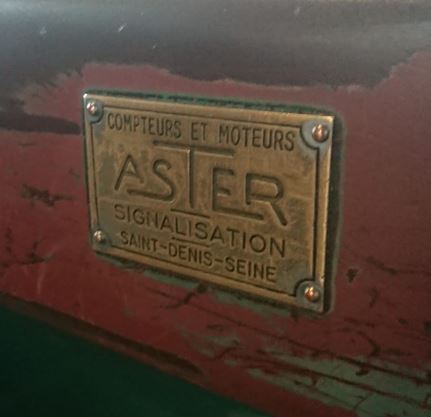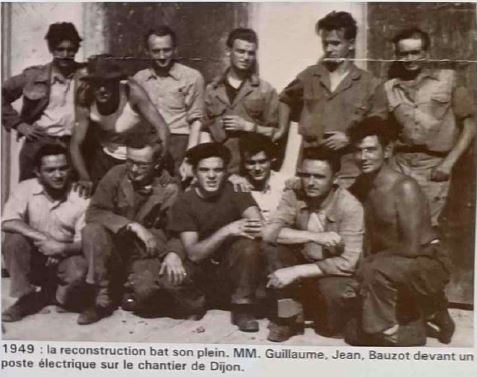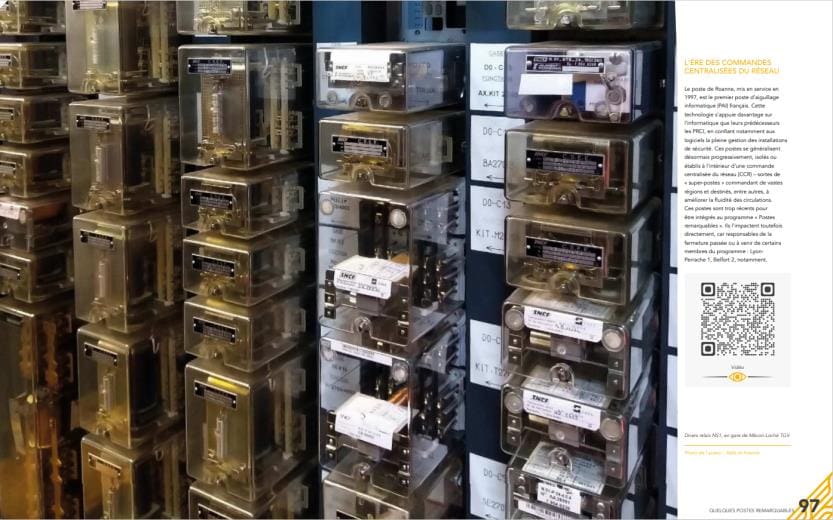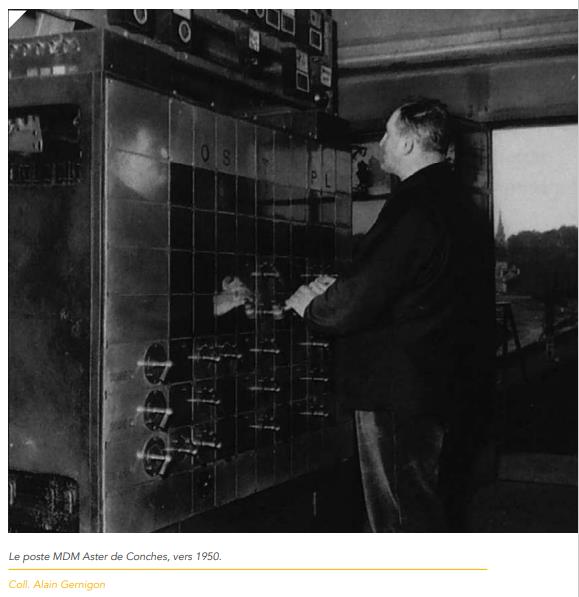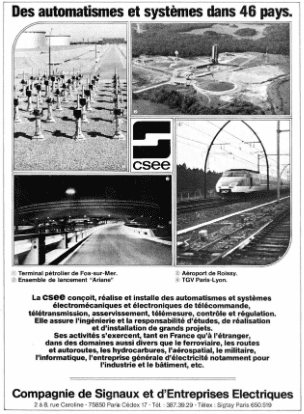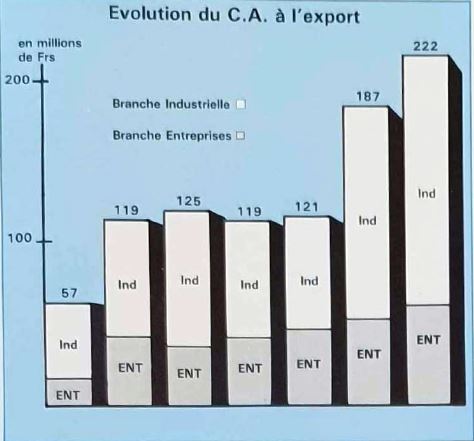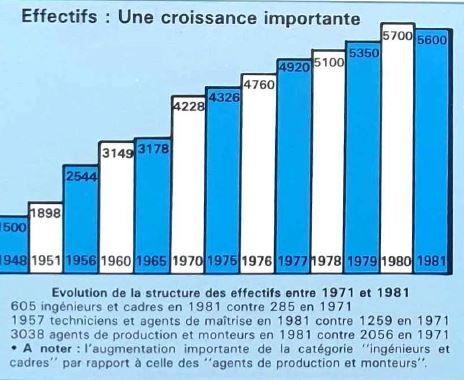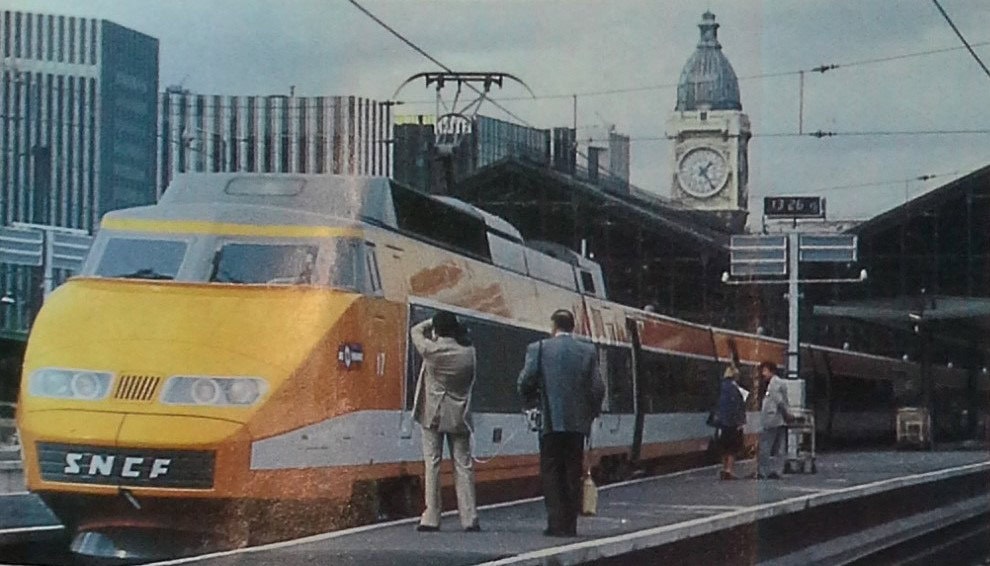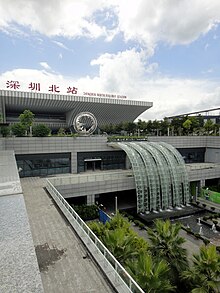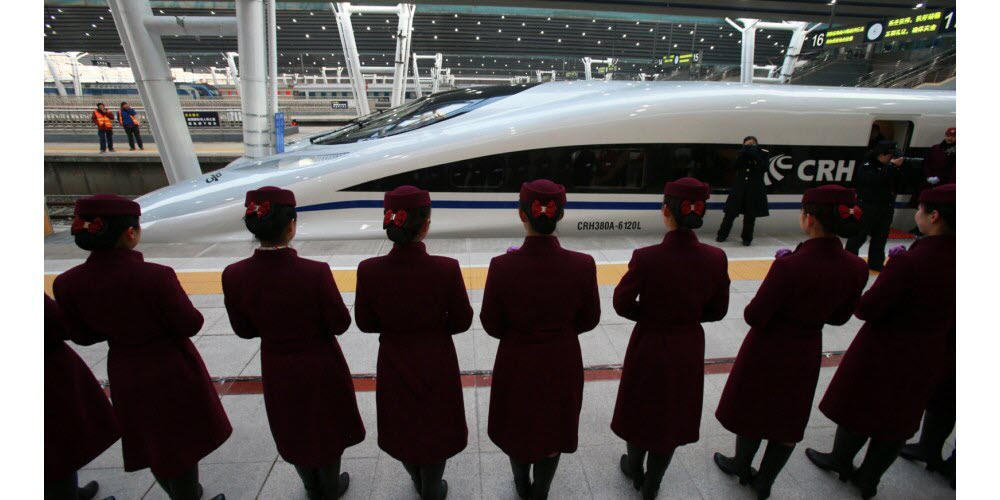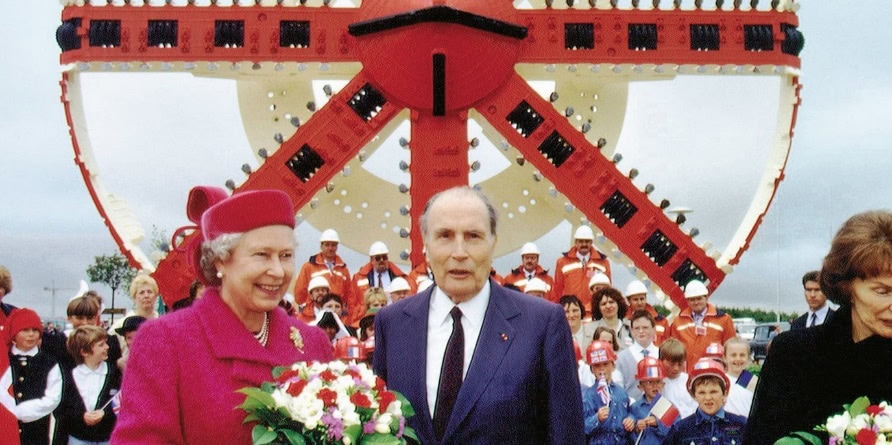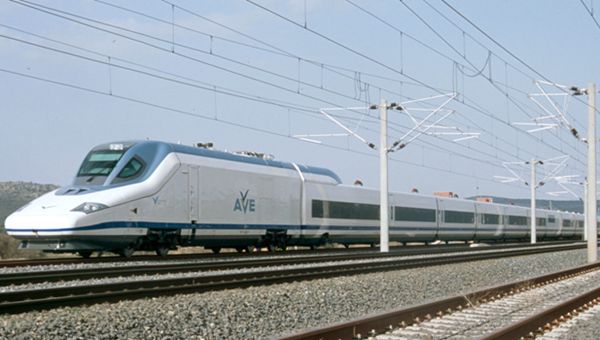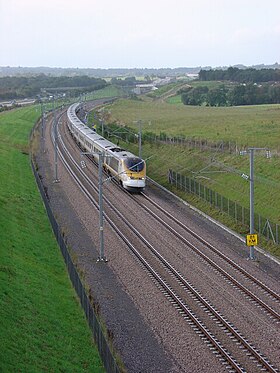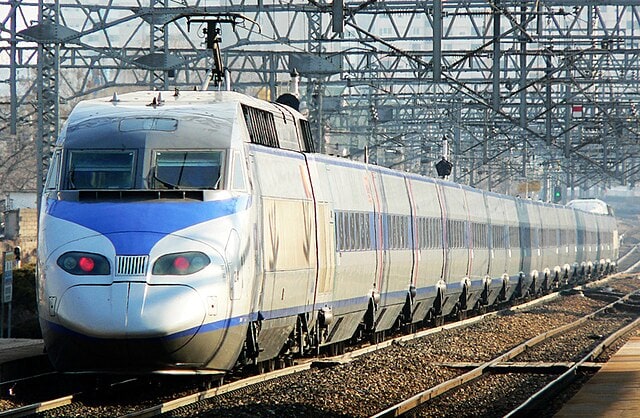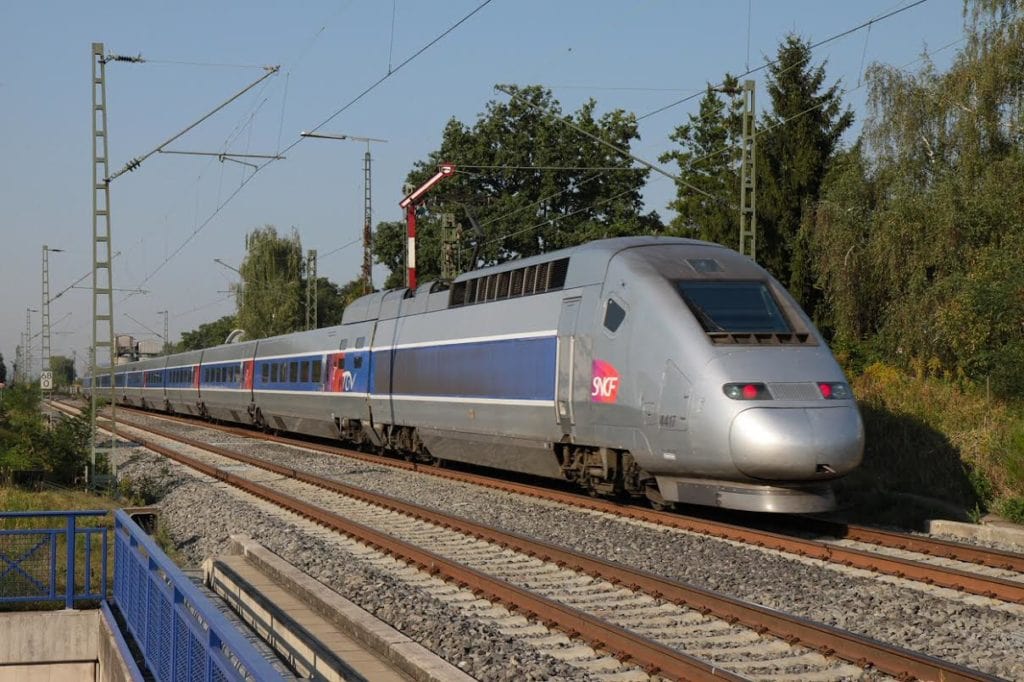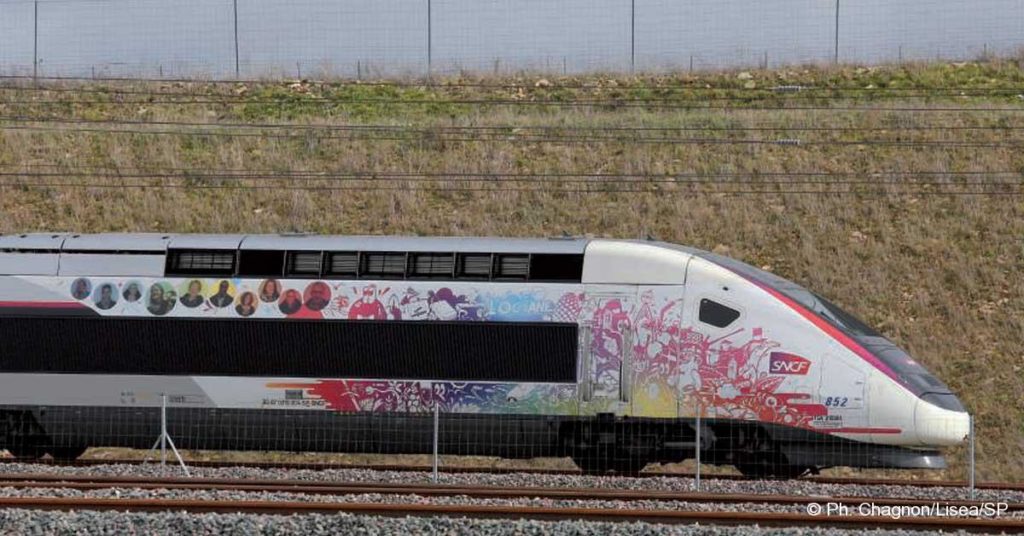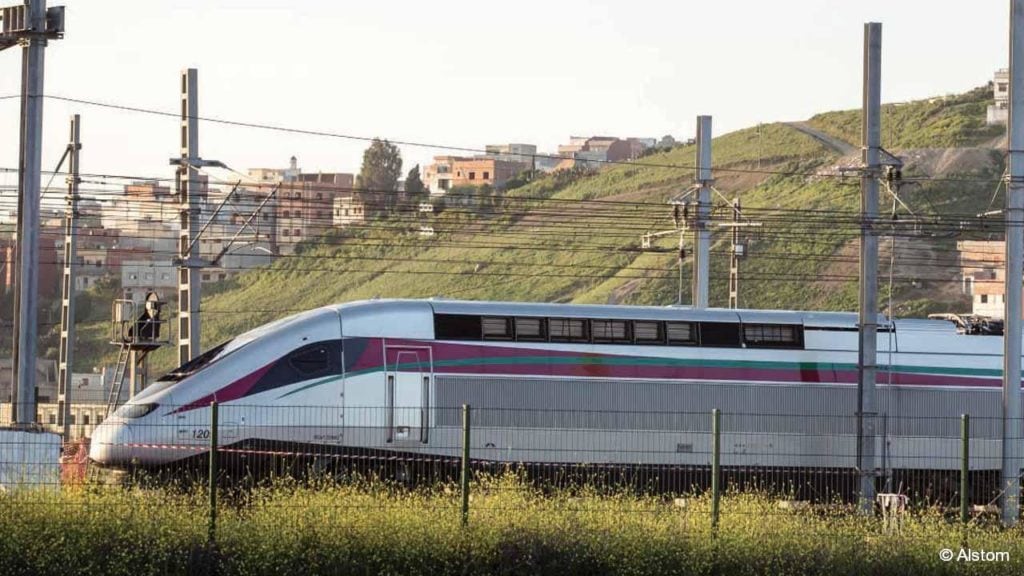History of the company
History
The history of Compagnie des Signaux began more than120 years ago
1902
Creation of the "Compagne des Signaux électriques pour chemins de fer" by Mr Fernand Cumont.
At the beginning of the century, the densification of railway networks and the expansion of stations made it increasingly difficult to use mechanical signal boxes in large stations, leading either to the multiplication of signal boxes (and an increase in staff) or to the use of the first electric signal boxes, which considerably increased the range of action, while eliminating the need for human power.
Mr Cumont drew on his knowledge acquired through the installation of Continental Hall Signal Company signalling stations from 1898 onwards. 2 Hall signalling stations were brought into service in October 1901 at Pétange station, the most important station in the Duchy of Luxembourg.
These are Hall-Taylor type electric signalling stations with individual levers (PELI). They retain a mechanical part that manages the interlockings, but it is an electric current, dependent on the track circuits, that controls the movements of the points and the signals.
In the case of a signal box with individual levers, the signalman begins by positioning the points correctly using the levers in the box, and is said to be forming the route (the route is “formed”). Next, he can turn green the signal(s) authorising the train to pass along this route, and if there are no safety conditions preventing this (route leading onto a track in the wrong direction, points not occupying the position ordered for these Hall signal boxes), the signal(s) turn green, and the route is then said to be “established”.
For 1900, these “safety conditions” that could prevent a signal from turning green were remarkable. With electrical control of the points and signals, the station was very modern and very safe for its time.
In conclusion, the Hall stations are very impressive, because they are very modern and very safe by the standards of the time, with control of the position of the points in particular, route control and control of the closure (= turning red) of signals.
The last Hall-Taylor type PELI is in service at Château-du-Loir and is due to be dismantled around 2026.
In addition, Compagnie des Signaux installed automatic blocks for the Paris metro and Hall system automatic blocks with track circuits for the Langon-Bordeaux and Bordeaux-Lamotte lines, on the PLM and Compagnie du Midi.
1904
Commissioning of the first electric signal box at Pont de Lyon, near Bercy (Paris) by the railway company
Delivered at the end of 1904 by the Compagnie de Signaux Electriques to the Société du Chemin de Fer for the commissioning of the northern connection to Bercy-PLM, the Pont-de-Lyon signal box, located on the inner ring road at Rapée-Bercy, comprised 50 small levers with horizontal travel for the electrical control of points and signals. It incorporated the latest improvements of the time, including the immobilisation of the points by track circuit in the event of occupation.
The whole complex was designed to handle 282 trains and 212 shunts a day, including machine exchanges; these figures show the scale of the traffic envisaged at the time.
1910
Paris-Nord signalling station No. 11 (Landy) equipped with the MDM "Autocombinateur" system from Société des Compteurs et Moteurs Aster for interlocking. Aster's signalling business was taken over by Compagnie des Signaux in 1969.
1912
From 1912 onwards, Compagnie des Signaux became independent and designed its own electrical signalling devices for railways.
1913
First contract to maintain signalling on the Paris metro.
1920-21
In 1921, the Riom factories opened their doors for the production of relays. Compagnie des Signaux expands its business to include the production of electric cables, and its name becomes Compagnie des Signaux et d'Entreprise Electrique (CSEE).
CSEE installs Automatic Block Signalling System for the French State Railways and the Compagnie du Midi.
1924
CSEE designs France's first illuminated automatic block system (or BAL). This system was installed between Paris-Orsay and Paris-Austerlitz stations. CSEE will then equip stations on the Midi, Po and State lines.
1927
CSEE Lourmel factory manufacturing Sigtay incandescent electric lamps opens at 57, rue du Théâtre in Paris.
Acquisition of a stake in a lamp manufacturing plant in Ninove, Belgium.
1933
CSEE creates the first Individual Lever Operators (ILOs). They were installed in Viroflay in 1933, then in Vouvray and Colombes in 1935. CSEE becomes a complete signalling company.
CSEE is a complete signalling company, designing and manufacturing points motors, track circuits, relays, substations, signals, level crossing equipment, the CSEE five-shot detonator, remote transmission systems, hot axle box detectors and all the equipment needed to offer comprehensive rail signalling solutions.
1935
CSEE underwrites a capital increase for SAGEM, which in 1939 takes control of Société Anonyme de Télécommunications (SAT). Long-distance cables are produced at CSEE's Riom cable factory.
1935: CGS (Westinghouse), which was later bought out by Aster, tried out a Track-Machine transmission on the Caen-Cherbourg line using 50 Hz Track Circuits pulsed at 0, 25, 75, 120 and 175 pulses, the forerunner of TVM.
1937: Commissioning of a CSEE signal box at Massy-Palaiseau station for what was to become the RATP after the war, and the future RER B line. The signal box was removed in 1985 and sent to the Cité du Train museum in Mulhouse in 1987.
This type of station will be installed at Viroflay Rive Droite, Vouvray and Colombes.
1938: CSEE produces 2 and 5 shot hammer detonators to repeat the stop signals following the imposition of the double repetition of signals (optical and acoustic).
1939: Commissioning of new substations at Artenay and Angerville designed by CSEE and known as PELI “Beauce type” stations.
Its official name is “CSEE type BV station”. It is a new station of the “BEAUCE-type CSEE signalling station with individual levers” type, the forerunner of the “standardised” PELI with industrial manufacture. A similar substation will be installed at Angerville.
1939
Société des Compteurs et Moteurs Aster designs the Poste d'Argenteuil-Raccordements, the first signal box consisting entirely of relays.
Aster’s signalling business was taken over by Compagnie des Signaux in 1969.
This new type of station is known as an all-relay station, with automatic destruction of the route, which closes the original route signal as soon as the train crosses it, and with the recording of a route that saves the signalman time and trouble by ordering in advance a route that is incompatible with the current one. The recorded route is then formed automatically as soon as safety conditions are met.
The stations are fully electric and use relays. The bulky levers are replaced by simple buttons. Very compact, they even allow their operators to work while seated. The radius of action is very large, up to several kilometres. There are four other major innovations. The first is route recording. This means that the signalman can act on the buttons on his console without there being any immediate consequences on the ground.
His orders will only be carried out once all the safety conditions have been met. The second is the establishment of permanent routes. This allows several trains to follow each other in complete safety, without the need for an agent to intervene. The third is the automatic destruction of routes.
Once the train for which the route was set has passed, the points and signals are reset to their default position. The last is the remote control of smaller stations physically present on the ground, but without any console or Optical Control Panel.
1945
The war caused massive destruction to the French rail network, as shown by these photos from the American magazine Life.
The government took action, and under the aegis of the SNCF, carried out a huge modernisation project. The network was largely electrified at 25 kV.
The mechanical signalling stations were replaced by electrical signalling stations controlling the points machines, trackside components and signals.
1948
Installation of new CSEE substations in Corbeil-Essonnes, followed by Chalons sur Saône in 1951.
1950-95
Design and deployment of PRS (full relay stations) by SNCF
Between 1950 and 1995, after a long series of prototypes, SNCF designed and standardized the PRS and commissioned 550 PRS substations built by various French signalling companies, including CSEE (e.g. Compiègne in 1956, Lille and Saint-Pierre-des-Corps in 1958, Jeumont in 1964, Paris-Austerlitz in 1971, etc.).
Since then, CSEE has manufactured more than 1 million S1 and NS1 relays.
The PRS NS1 at Lyon-Part-Dieu station was the last major station to be installed by CSEE, in 1983, with its 340 routes.
1953: CSEE opens its first electronics laboratory, rue de Lourmel in Paris
1954-62
CSEE develops electronic track circuits at musical frequencies (300, 850, 1000, 1500 hz) which considerably simplify the associated electrical installations.
These track circuits transmit commands to the driver.
CSEE teletransmission using pairs of pure frequencies on the Frasne-Valorbe line, then on the Epernay-Reims line in Redeca 3.
1960: CSEE develops the first Hot Box Detectors
Commisionning of a new operation center at RATP
1967
The group of 3 companies, CSEE, SAGEM and SAT, is renamed G3S
1969
Takeover of the railway signalling branch of Société des Compteurs et Moteurs Aster, which manufactures signal boxes with route levers, as well as signalling equipment and level crossing mechanisms.
With Aster, CSEE became the owner of the patent for jointless track circuits, which, when improved, gave rise to the TVM300 and TVM430 track circuits, used on all HSL in France, Korea and in the Channel Tunnel. Following the acquisition of Aster, CSEE became France’s leading manufacturer of railway signalling systems.
1970 : Development of the NS1 24V relay and 127 V 400 Hz light control units concentrating the controls.
1970-2000
Thirty years of international success
Railway and metro signalling and control station projects in Uganda, Gabon, Cameroon, Morocco, Algeria, Egypt, Argentina, Brazil, Mexico, Pakistan, Canada, Hong Kong, Malaysia and Portugal.
1973 : Development of the new Redecca III electronic teletransmission system on the PRS at Grigny
The Redecca III system developed by CSEE is a new-generation remote transmission system.
1976-77 : Studies began on track-to-machine transmission on high-speed lines and a measurement site was set up on the LGV Paris Sud-Est near Cluny.
These studies also gave rise to the SACEM system used for the RER A.
1978 : Studies on new safety computers based on safety microprocessors for automatic pilots on metro lines.
1979
First prototype of a computerised signal box (PAI) installed in Châteauroux in 1985 alongside a relay station.
1980 : Development of the new Redecca IV electronic teletransmission system on the PRS at Grigny
The arrival of information technology brought better performance and new savings, as teletransmission remained expensive, based on the use of optical fibres or copper conductors. The first implementation of a new electronic teletransmission system was by CSEE, which in 1980 commissioned the remote control of the Fresnoy-le-Grand and Essigny-le-Petit substations, using its Redecca IV system. These new solutions coincided with the development of the High Speed Train, which made extensive use of them.
1989 : Creation of the Artificial Intelligence unit in cooperation with M. de Lapparent of the CEA.
1990 : Development of the TVM430, which will equip all future high-speed lines in France from 1993.
1997 : Commissioning of the first computerised automatic workstation (PAI) in Roanne.
1998 : First on-board tests of the European ERTMS 2 system on the Vienna-Budapest line.
1981
Commissioning of the first Paris-Lyon high-speed line equipped with the TVM300.
1983
Commissioning of PRS NS1 at Lyon-Part-Dieu station, the last major PRS installed by CSEE, with its 340 routes.
1989
First Chinese contract for TVM300 and CDV UM 71 for the Zhengzhou Wuhan high-speed line.
1992
China's Canton-Shenzhen high-speed line, equipped with TVM430s, comes into service.
1993
Commissioning of the LGV Nord equipped with TVM430.
1994
Equipping of the Beijing Shenzhou high-speed line (900 km).
1994
Commissioning of the LGV Nord and then the Eurotunnel line equipped with TVM430.
1998
Signalling contract for the Shenyang-Shanaiguan high-speed line in China.
2002
First ground-to-air tests of the European ERTMS 2 system on the Madrid-Barcelona route in Spain.
2003
Commissioning of HS1 in the UK equipped with TVM430.
2004
Entry into service of the first high-speed line in Korea equipped with TVM430.
2007
Entry into service of the LGV Est equipped with the TVM430 / ERTMS 2 bi-standard.
2008
Installation of ERTMS onboard systems in India.
2017
Installation of signalling for autonomous freight trains in Australia.
2017
Entry into service of the SEA (Atlantic) and BPL (Brittany) high-speed lines equipped with the TVM430 / ERTMS 2 dual standard.
2017
Commissioning of the PAI at Gare de Lyon.
2018
Morocco's first African high-speed line between Tangiers and Kénitra equipped with ERTMS 2 comes into service.
2024
Commissioning of LGV+, the complete renovation of the interlocking systems on the Paris-Lyon high-speed line
2024
MERMEC acquires Compagnie des signaux - CSEE


